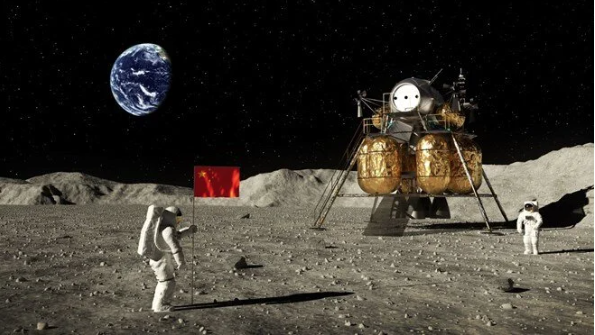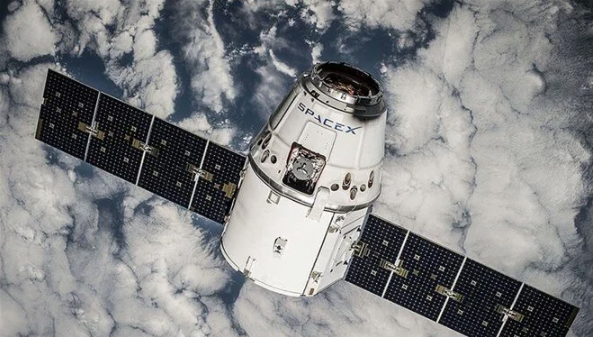In 2022, NASA revealed that humans could redirect “city-killing” asteroids large enough to destroy a city away from Earth, as in the movie Armageddon, but this could have unintended consequences that could endanger our planet. Two Italian astronomers have revealed that when the “Double Asteroid Redirection Test” (DART) instrument deflected Dimorphos, a 560-meter-wide asteroid, off course, the collision created a shrapnel cloud of 37 new space rocks that will speed toward Mars.
If one of these rocks hits the Red Planet, it could create a crater 200-300 meters in diameter.
Astronomers have warned that in the future, should NASA have to remove a killer asteroid from a collision course with Earth, it will be crucial to consider and calculate where the debris from such a massive impact would go if it were to collide with Earth.
Diverted by ‘kinetic effect’
During the DART mission, NASA used an uncrewed spacecraft to impact Dimorphos at 22,500 kilometers per hour to see if it was possible to push a space rock out of orbit. NASA confirmed in the following weeks that this method had worked, saying that they had changed the asteroid’s orientation using a so-called “kinetic effect”.
“Kinetic impact” roughly translates to something crashing into something else. This is one of the strategies NASA will use in the event of an asteroid impact that threatens life on Earth.
37 new rocks have appeared!
Dimorphos is part of a system of two asteroids orbiting a larger asteroid called Didymos.
After the DART collision, Dimorphos returned to Didymos’ orbit in 11 hours and 23 minutes, 32 minutes shorter than the time it took before the spacecraft impact. With such an impact comes collateral damage.
Scientists discovered that the DART mission left behind 37 newly formed rocks on a completely different course.
Study co-authors Marco Fenucci of the European Space Agency (ESA) and Albino Carbognani of the Astrophysics and Space Sciences Observatory in Bologna, Italy, concluded that in their current orbit, these rocks could collide with Mars. Each of these rocks is four to seven meters in diameter.
According to observations from the Hubble Space Telescope, the rocks escaped the gravity of the Dimorphos/Didymos pair and followed a separate path from the 9,650-kilometer-long tail of dust and rocks created by the collision.
The trajectories of these “space shrapnel” could interfere with the orbit of Hera, an ESA spacecraft scheduled to orbit Dimorphos in 2026 to take a closer look at the effects of the DART collision.
“All the observations made so far prove that DART was a successful test of asteroid deflection, as it managed to change the orbital period of Dimorphos and did not create another rock that could impact the Earth,” the two scientists wrote in their paper. On the other hand, the findings presented in our study suggest that future missions involving interaction with the surface material of a near-Earth asteroid should be carefully planned.”
In the long run, these rocks could intersect Mars’ orbit. The planet has a thin atmosphere, so a small meteorite is likely to reach the surface more easily than on Earth.
These rocks could be a problem if humanity starts living on Mars!
But this could take thousands of years. According to Fenucci and Carbognani, numerical simulations show that all the rocks of the swarm will cross the orbit of Mars many times in the future. These simulations include 37 new computer-generated rock piles, and the astronomers argue that they give a fairly accurate prediction of the behavior of real rocks.
They concluded that “due to orbital transitions occurring in long-term evolution, it is possible that some rocks could impact Mars in the future”. This could happen within 6,000 years and could affect a possible future human colony on Mars.
Nevertheless, the scientific community generally considers the DART mission to have been a success. Because for the first time in history, humans were able to consciously change the motion of a celestial body.
Dimorphos was not on a collision course with Earth, but as a system with two asteroids, it provided a unique opportunity to follow changes in the orbit of a small asteroid around a large asteroid. This test was proof that it is possible to knock asteroids off course to keep them from harming Earth.
If a killer asteroid threatens humanity in the future, this means that people can change its path and avoid disaster; they just need to plan where the debris will go!
Source: Daily Mail, arXiv.org





